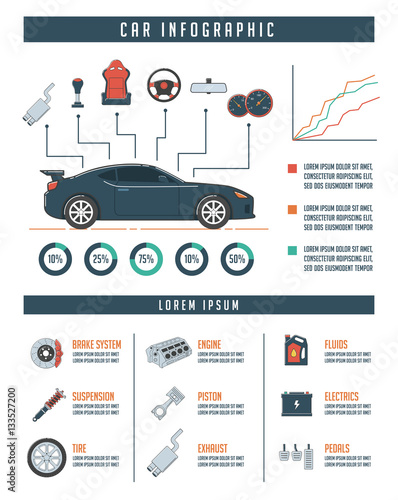Intrigued In Comprehending The Warning Lights On Your Car'S Control Panel? Discover Their Relevance For Your Vehicle'S Safety And General Condition
Intrigued In Comprehending The Warning Lights On Your Car'S Control Panel? Discover Their Relevance For Your Vehicle'S Safety And General Condition
Blog Article
Created By-Lim Alvarado
When you're behind the wheel, those radiant warning lights on your control panel can be a little bit puzzling. Do you understand what they're attempting to tell you regarding your vehicle's health and wellness? Comprehending the relevance of these lights is important for your safety and the longevity of your car. So, the following time one of those lights appears, wouldn't you intend to analyze its message properly and take the required actions to resolve it?
Common Warning Lighting and Interpretations
Recognize typical caution lights in your vehicle and recognize their definitions to ensure risk-free driving.
https://brakepads51738.wizzardsblog.com/32060547/amazingly-convenient-mobile-cars-and-truck-outlining-services-not-just-conserve-you-time-and-money-yet-likewise-boost-your-car-s-durability-discover-exactly-how-they-can-transform-your-regular of the most normal warning lights consist of the check engine light, which indicates issues with the engine or discharges system. If a & m detailing begins, it's crucial to have your lorry examined without delay.
The oil pressure advising light indicates reduced oil pressure, needing instant interest to prevent engine damage.
A flashing battery light might recommend a faulty billing system, possibly leaving you stranded otherwise addressed.
The tire stress tracking system (TPMS) light signals you to low tire pressure, impacting automobile stability and fuel performance. Neglecting this might cause risky driving problems.
truck cleaning near me indicates an issue with the anti-lock braking system, endangering your capability to stop promptly in emergencies.
Lastly, the coolant temperature level cautioning light warns of engine getting too hot, which can lead to extreme damage otherwise settled promptly.
Understanding these typical warning lights will certainly aid you deal with problems quickly and preserve secure driving conditions.
Value of Prompt Focus
Comprehending the usual caution lights in your cars and truck is just the initial step; the significance of promptly resolving these cautions can not be stressed sufficient to guarantee your safety and security when traveling.
When a caution light brightens on your dashboard, it's your cars and truck's way of connecting a prospective problem that needs interest. Overlooking these cautions can cause extra extreme problems in the future, jeopardizing your safety and possibly costing you extra out of commission.
Motivate attention to alerting lights can avoid failures and mishaps. For instance, a blinking check engine light can show a misfire that, if left unattended, might cause damages to the catalytic converter. Resolving this without delay can save you from an expensive repair.
In a similar way, a brake system warning light might signify reduced brake fluid or worn brake pads, important components for your safety when driving.
DIY Troubleshooting Tips
If you notice a warning light on your control panel, there are a couple of DIY troubleshooting suggestions you can attempt before seeking expert assistance.
The first step is to consult your automobile's handbook to understand what the certain warning light suggests. In some cases the problem can be as simple as a loose gas cap activating the check engine light. Tightening up the gas cap might solve the problem.
One more common problem is a low battery, which can activate different advising lights. Inspecting the battery links for deterioration and guaranteeing they're secure could take care of the issue.
If a caution light lingers, you can try resetting it by disconnecting the auto's battery for a few minutes and after that reconnecting it. In addition, inspecting your vehicle's fluid degrees, such as oil, coolant, and brake liquid, can help troubleshoot cautioning lights connected to these systems.
Verdict
Finally, understanding your automobile's caution lights is essential for keeping your automobile running smoothly and safely. By quickly attending to these notifies and knowing what they suggest, you can stay clear of expensive fixings and possible break downs.
Keep in mind to consult your automobile's handbook for particular details on each warning light and act accordingly to make sure a trouble-free driving experience.
Keep educated, stay risk-free when traveling!
